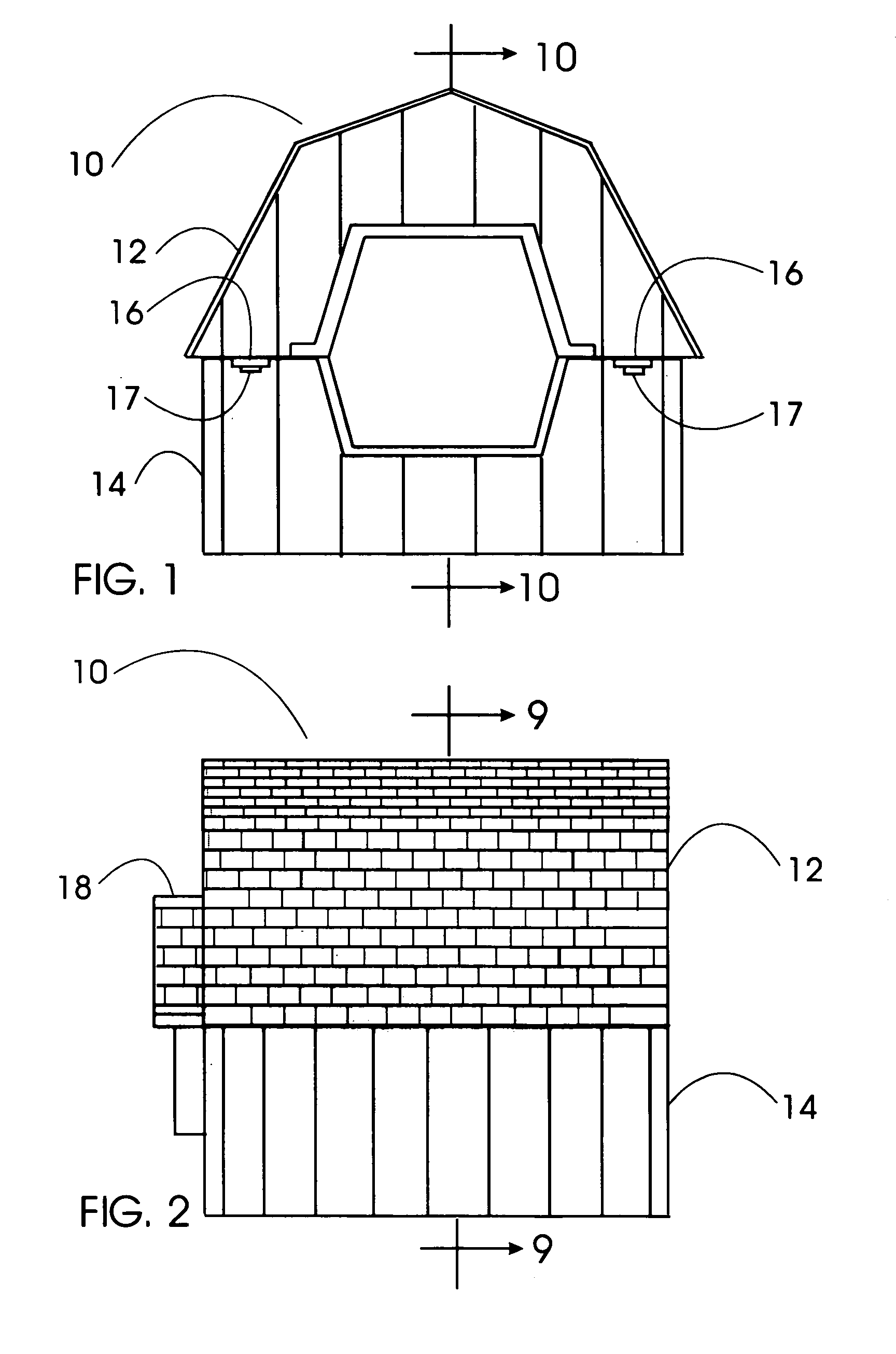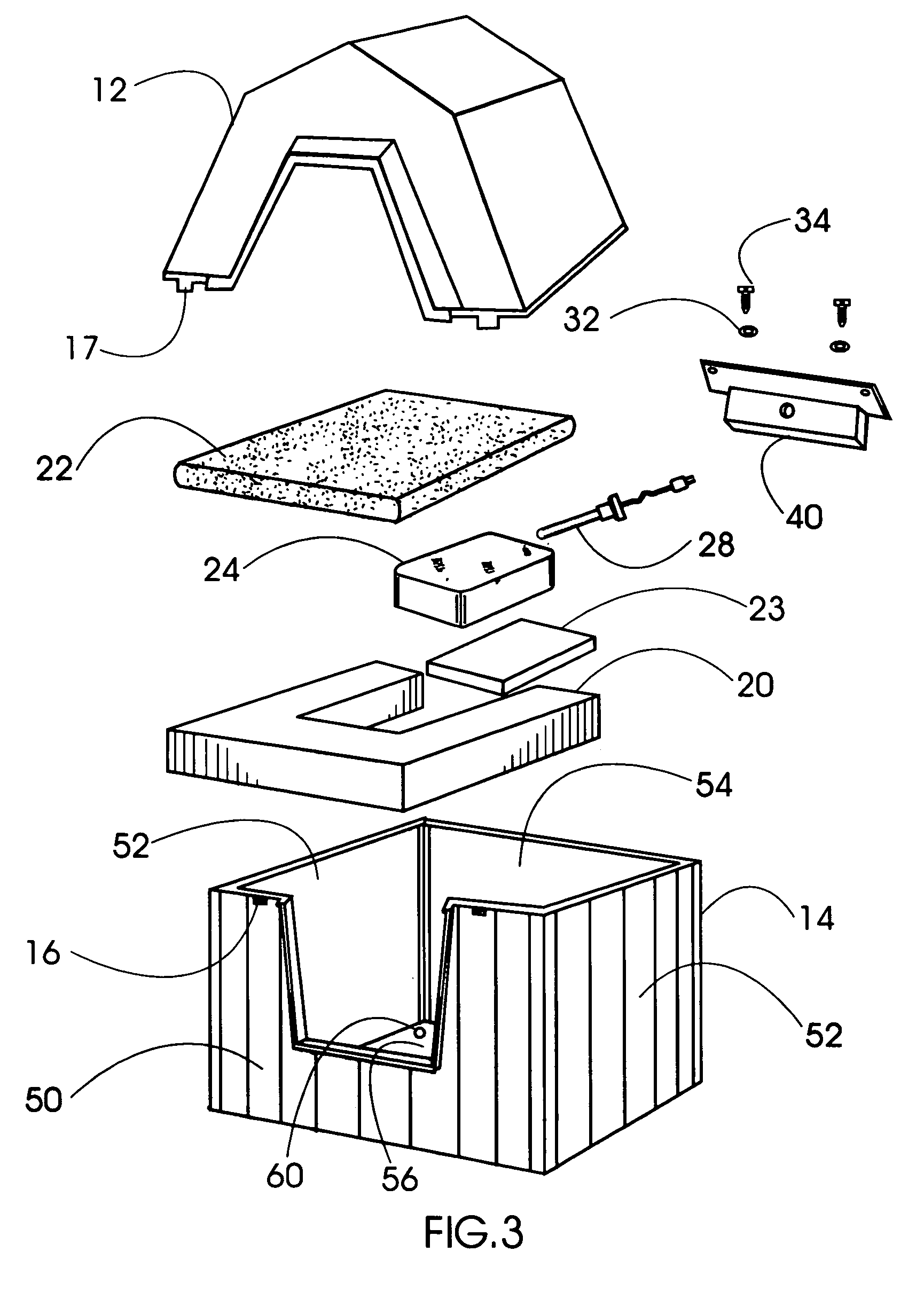Heated pet enclosure
a pet enclosure and heat sink technology, applied in the field of heated pet enclosures, can solve the problems of inability to heat up, easy puncture of flexible vinyl bladders, and inability to meet the needs of pets, and achieve the effect of reducing heat loss from pets and easy absorbing
- Summary
- Abstract
- Description
- Claims
- Application Information
AI Technical Summary
Benefits of technology
Problems solved by technology
Method used
Image
Examples
Embodiment Construction
[0026]Referring now to the drawings in which reference numerals designate like or corresponding parts through several views shown in FIGS. 1–10. The heated pet enclosure according to the present invention is designated by the reference numeral 10. Heated pet enclosure comprises a base 14 and a roof 12 (FIGS. 1 & 2).
[0027]The base 14 is comprised of two sidewalls 52 (FIG. 3), a rear wall 54, a front wall 50, and a floor 56. Drain holes 60 (FIGS. 9 & 10) in floor 56 permit draining of any moisture which may accumulate in heated pet enclosure.
[0028]Roof 12 is locked into position by hinge connectors (FIG. 4) 20&21 on the rear of heated pet enclosure 10 and mated to the base 14 by connectors 16&17 (FIG. 3) on the front wall 50.
[0029]The main floor insulator is a “U” shaped rigid form 20 (FIG. 3), which is placed in the bottom of the pet shelter base 14. The tank floor insulator 23 fits in the opening of the “U” shaped insulator 20. The immersible heater 28 is inserted in the water solut...
PUM
 Login to View More
Login to View More Abstract
Description
Claims
Application Information
 Login to View More
Login to View More - R&D
- Intellectual Property
- Life Sciences
- Materials
- Tech Scout
- Unparalleled Data Quality
- Higher Quality Content
- 60% Fewer Hallucinations
Browse by: Latest US Patents, China's latest patents, Technical Efficacy Thesaurus, Application Domain, Technology Topic, Popular Technical Reports.
© 2025 PatSnap. All rights reserved.Legal|Privacy policy|Modern Slavery Act Transparency Statement|Sitemap|About US| Contact US: help@patsnap.com



